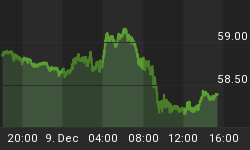Before we take a look at the S&P 500 (SPY) and U.S. Dollar (UUP), let's put the analysis in the context of the biggest news from July 13:
From Bloomberg:
Moody's Investors Service raised the pressure on U.S. lawmakers to increase the government's $14.3 trillion debt limit by placing the nation's credit rating under review for a downgrade.
From the Associated Press:
NEW YORK (AP) -- Comments from Fed Chairman Ben Bernanke set off a stock market rally early Wednesday, but it wasn't long before another Fed official helped cut it short...Most of those gains evaporated later in the day after Federal Reserve Bank of Dallas President Richard Fisher said in a speech that the Fed had already "pressed the limits of monetary policy."
Both of these stories tend to be negative for the dollar and positive for precious metals. As we showed in May, the U.S. dollar held at a logical level near point A. The greenback now faces seven forms of possible overhead resistance below point B (see orange, green, pink, and blue lines). A break into the white space near point B, would be negative for stocks, commodities (DBC), and precious metals (especially silver - SLV). A move back toward point A, would be good for stocks, commodities, and precious metals.

The chart below is an updated version of one we presented on July 1. Since that time, the S&P 500 has moved above the band of moving averages (thin colored lines). However, the candlestick from the trading week ending July 8 shows hesitation. The market's performance on July 14 and 15 could go a long way in helping determine short-term outcomes for stocks (next few weeks). All things being equal, it is good for the bulls if the S&P 500 can remain above the moving averages shown below (see box below for levels to watch).

Stock market internals weakened during the recent sharp two day sell-off, but are trying to stabilize. The Summation Index, an intermediate-term measure of market breadth (advancers/decliners), ticked up again on July 13, which gives some hope to the bulls that stocks may avoid another sharp sell-off.

The NYSE Bullish Percent Index (BPNYA) is based on price, which is more important than any technical indicator. The Bullish Percent Index (below) for the Big Board is trying to find its legs.

As we mentioned yesterday, we are interested in gold and silver. We may exchange some of our exposure to U.S. stocks for some additional exposure to precious metals in the coming days. These markets have a lot of moving parts (U.S., Europe, Asia, earnings, Fed, etc.), which is why we tend to use the term "may" instead of "will". We will pay close attention with an open mind and make adjustments if needed.
















